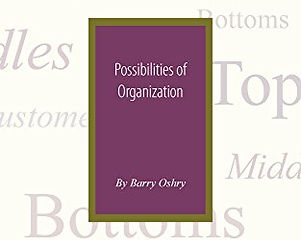LEADERSHIP
Business strategist, team leader, entrepreneur, consultant. Build high performing teams who ‘get it’ and believe it.
Question: Why do some organizations function well, and not others?
Answer: Integrity
WHAT IS ORGANIZATIONAL INTEGRITY?
ORGANIZATIONAL INTEGRITY
It's like... Structural Integrity
When I say integrity, in this context, I mean structural integrity, for instance a bridge. When we drive our car over a suspension bridge we have a reasonable expectation that the bridge will have structural integrity. A suspension bridge works because the relationships between the parts of the bridge, like the cables, are strong. We should insist on nothing less in our organizations. In an organization, the relationships between individuals and departments allow the organization to work, to function as a whole. Solid relationships... solid structure. Efficacious leadership is required to establish this type of culture and empower the employees to truly own it.
CULTURE IS EVERYTHING
Be intentional about your org's culture
Organizational performance is strong in a culture where candor is acceptable and encouraged. Researchers call this 'psychological safety' and it's a required element, the X-factor for high functioning teams.
On a high functioning team every member is:
• willing to have candid/difficult conversations
• engaged & inspired
• empowered to do their best work
• accountable & responsible for their own condition within the organization
• views obstacles as essential to reaching success
LEADING VS. MANAGING
There's a big difference
I've had several former employees say, "I miss our talks", which warms my heart. There's great value in human centered leadership. One of the biggest leadership challenges is changing behavior. Addressing behavior is managing. For us humans, our behavior is driven by our thought patterns.
When FDR delivered his inaugural speech in 1933, saying, "the only thing we have to fear is fear itself", he was referring to a thought pattern. Addressing thought patterns, that’s what I call leading.
Acknowledging thought patterns is often the first step toward creating authentic change, both for individuals, and the whole org.
Culture and strategy are two sides of the same coin.
Being intentional about forming the org’s culture as a self organizing system is the best way to have your culture scale.
CONSTRUCTIVE CONFRONTATION
Diversity of Thought & Lateral Thinking for Innovation
A safe space for debate and diversity of thought is vital for creativity to flourish. When all the disparate considerations are laid out on the table, designers make better decisions. I love UX meetings where the group is abuzz, thinking very deeply about very trivial things, passionately debating the pros and cons of various solutions, while maintaining candor and respect. I define lateral thinking as the way our creative brains are always working, churning away in the powerful, sub-conscious background processor. It's important to respect that and build in percolation time for those oblique, unexpected connections to be made.
RECOMMENDED READING
I invite you to dig deeper into developing your own creative leadership style. Here are some of the most influential resources that have shaped my leadership philosophy. Please contact me to discuss if these have an impact on you and your org. Also, I love to hear other people's recommendations.
THE FIVE KEYS TO A SUCCESSFUL TEAM
Harvard Business Review article, by Ron Friedman
Psychological Safety is THE difference maker for high performing teams. Read the fascinating HBR article above to infuse this into a new team from the start.
Got a toxic situation on an existing team? Here's a great resource on how to fix it, from Leading Geeks.



